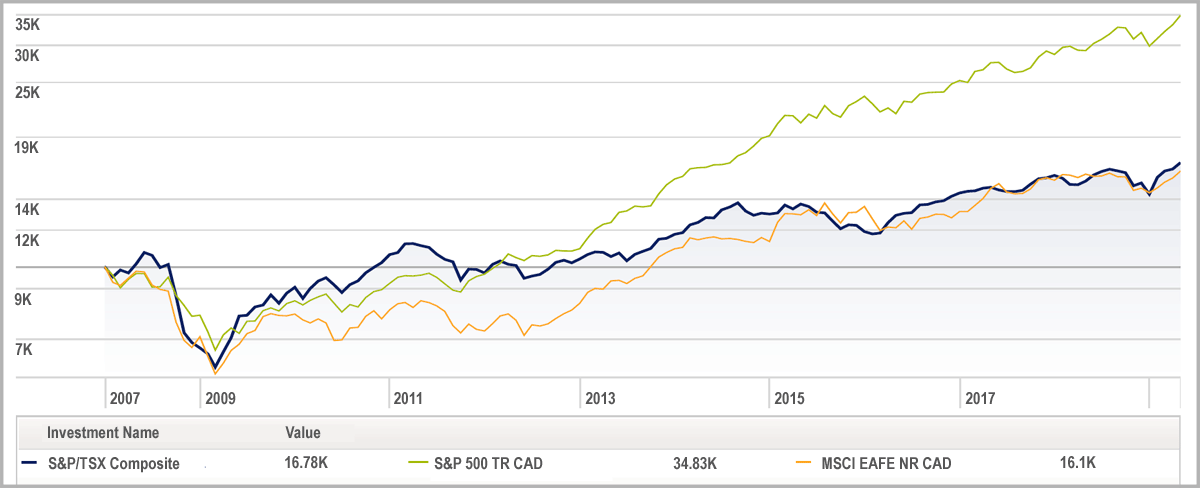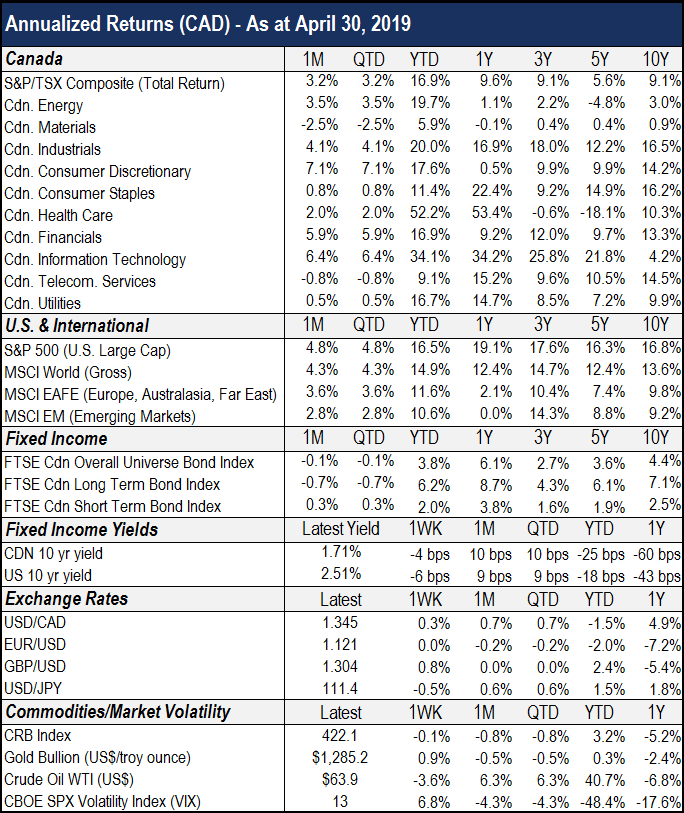May 02, 2019 – KERR MARKET SUMMARY
At the risk of sounding like a broken record for the fourth month in a row, most equity markets throughout the world continued their upward march in April with a seeming disregard to the risks that still exist. To be fair to the “animal spirits” that drive financial markets, the shift in monetary policy globally during the first quarter from one of normalization (but practically speaking, tightening) to an accommodative policy sent a clear message that higher interest rates were no longer a risk — to valuations, to economic growth nor to corporate earnings. The re-iteration of this policy stance by both the Bank of Canada (on April 24) and the Federal Reserve (on May 1) provided even stronger support to the equity market’s investment thesis. In addition to the shift in monetary policy, equity markets also received support in April from the better-than-expected corporate earnings so far for Q1. The Canadian equity market remained one of the leaders so far in 2019, returning 3.2% in the month and bringing the year-to-date return to 16.9%. The U.S. stock market, as represented by the S&P 500, advanced 4.8%, while the non-North American developed market (MSCI EAFE) and emerging markets (MSCI EM) gained 3.6% and 2.8%, respectively, all in Canadian dollar terms.
The euphoria in equity markets, unfortunately, did not translate to government bond markets in April. The inherent cautious nature of bond market investors re-emerged with the long end of the bond market moving in response to just about every data release – anything suggesting higher inflation moved yields higher, while data suggesting slowing economic growth moved yields lower. It would also appear that the government bond market is more concerned about slowing economic growth and the anticipated central bank reaction as the U.S. yield curve inversion that occurred on March 22 has since been reversed with the market pricing in a rate cut by the Fed prior to the May 1 meeting. At the meeting, however, Chairman Powell said he remained confident that inflation would move back up to the central bank’s 2% target, quashing market expectations of a rate cut later this year. The corporate bond market, on the other hand, benefitted from the continued positive tone in equity markets with spreads tightening further in April, particularly for short-term bonds of lower-rated companies (BBB and below). For the month, the broad Canadian bond market (as represented by the FTSE Canada Overall Universe) returned -0.1%, while the corporate bond market returned 0.3%.
After yet another month of strong investment returns, we continue to face the same question – where will markets go from here and how should we position portfolios?
As seen in the table above, equity markets have recovered all their losses from the last quarter of 2018. Monetary policy is once again supportive of equity markets, but corporate earnings will need to continue to beat expectations to propel share prices higher. Forecasting can be intellectually stimulating but is rarely successful on a consistent basis. Rather than trying to predict the combined behaviour of millions of humans, we continue to believe that the best approach is to focus on getting the right asset mix for each client to achieve his/her long-term goals and to select the best investment managers and solutions for each asset class. In other words, focus on what we can control and manage the risks with respect to what we can’t control.
Sources: National Bank Financial Markets, Capital Economics, Morningstar Direct








